Imagine you’re so gay engineer who thought of an idea I looking at it wrong what is wrong what is I can control it wrong by not using it wasn’t remote controller wirelessly bike by sitting on it and piloting it like if it were a helicopter, and then you end up making this, because what you may exactly people from Curtis-wright aircraft corporation decided to do. They literally think out of the box that was out of the universe, and this was also a prototype and this was no helicopter it was literally a drone what’s the controlling of a helicopter, well it is an experimental aircraft we need that if they get canceled sometime later.
The Curtiss-Wright VZ-7 (also known as the VZ-7AP[1]) was a VTOL quadrotor helicopter aircraft designed by the Curtiss-Wright company for the US Army. Like the Chrysler VZ-6 and the VZ-8 Airgeep it was to be a "flying jeep". Wikipedia
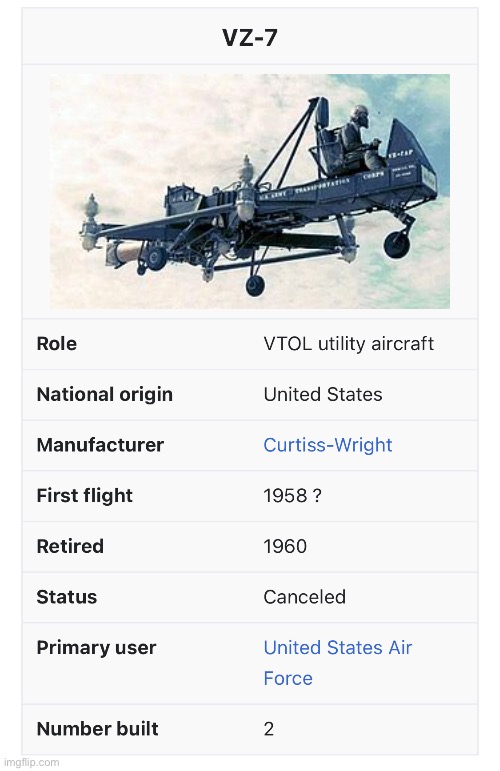
The Aerophysics Development Corporation, a subsidiary of Curtiss-Wright, designed an "Aerial Platform" for a US Army Transport and Research Command "Flying Jeep" design competition. The Aerophysics design sat two in tandem between four ducted fan rotors and could also be armed with machine-guns or recoil-less rifles.[2]
To prove the design concept the US Army ordered two prototypes of a smaller single-seat demonstrator, the VZ-7, which were delivered to the US Army in mid-1958. The VZ-7 had a fuselage with the pilot's seat, fuel tanks and flight controls. On both sides of the fuselage the four propeller/rotors were attached, unshrouded (the aircraft did originally have shrouds, but these were later removed). The VZ-7 was controlled by changing the thrust of each propeller and was maneuverable and easy to control. 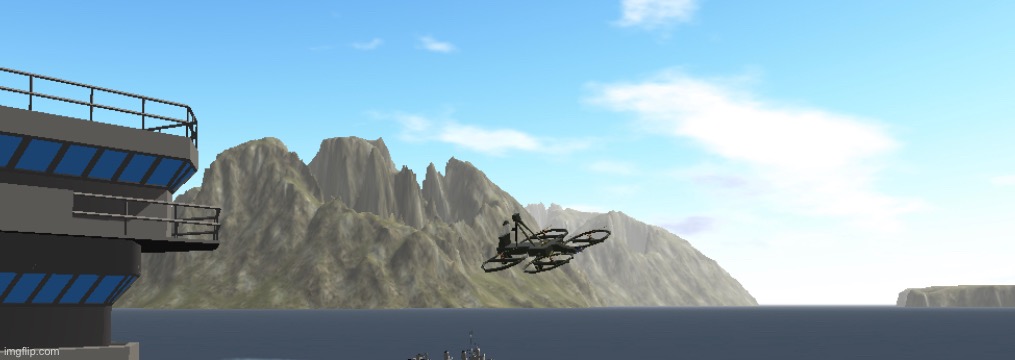
Specifications
General Characteristics
- Created On iOS
- Wingspan 55.3ft (16.8m)
- Length 60.3ft (18.4m)
- Height 26.5ft (8.1m)
- Empty Weight 19,325lbs (8,765kg)
- Loaded Weight 21,194lbs (9,613kg)
Performance
- Power/Weight Ratio 27.01
- Horse Power/Weight Ratio 0.165
- Wing Loading 740.3lbs/ft2 (3,614.3kg/m2)
- Wing Area 28.6ft2 (2.7m2)
- Drag Points 32734
Parts
- Number of Parts 536
- Control Surfaces 3
- Performance Cost 2,055

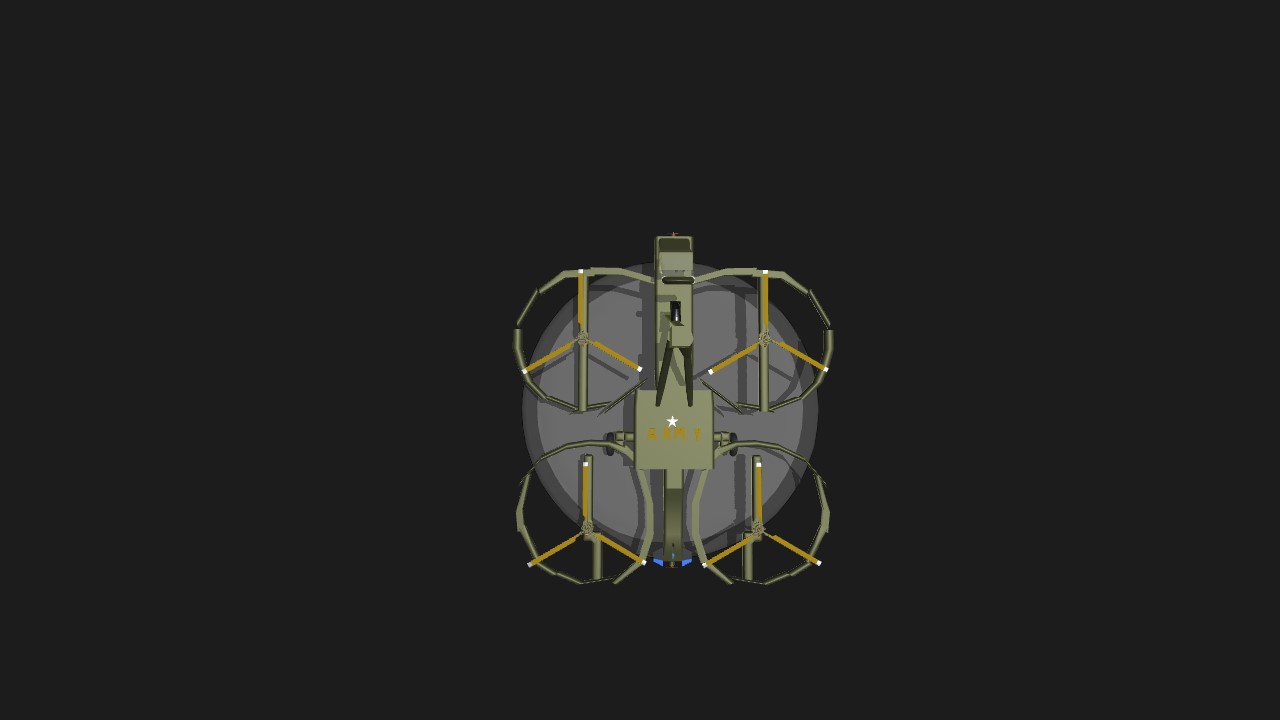
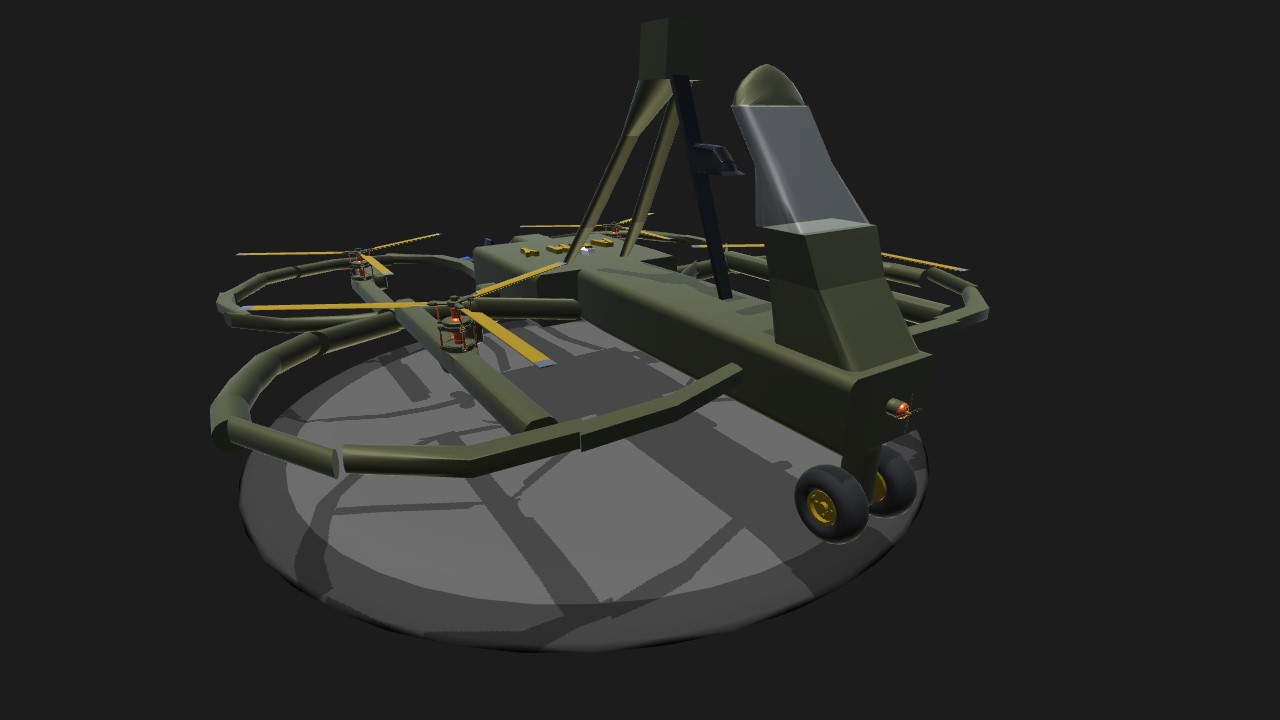
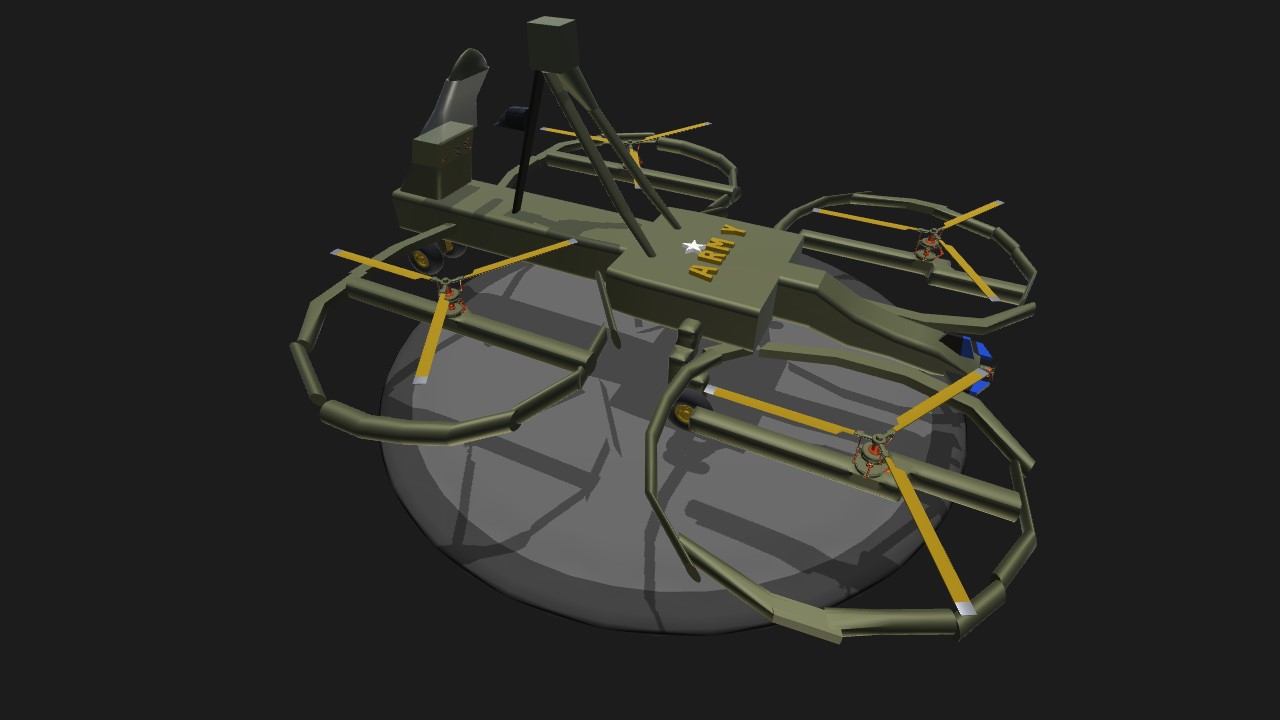
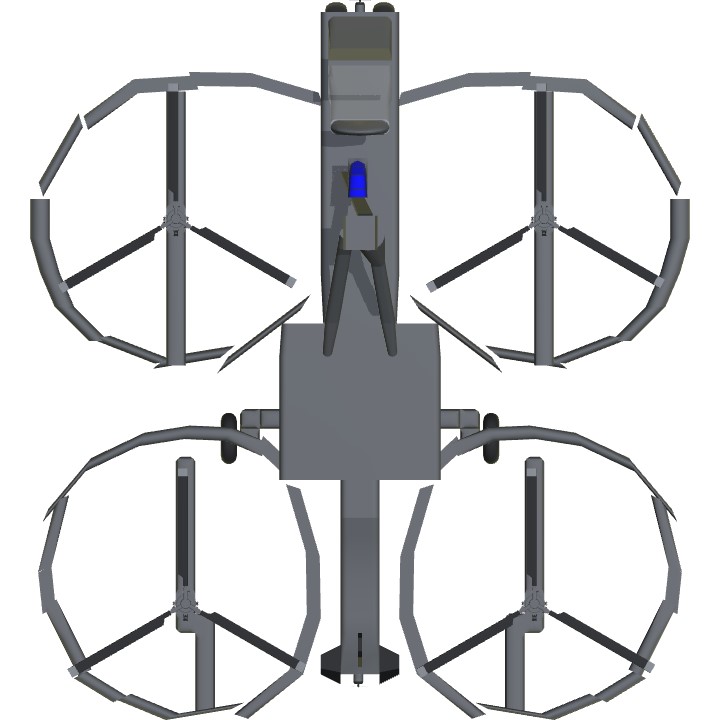
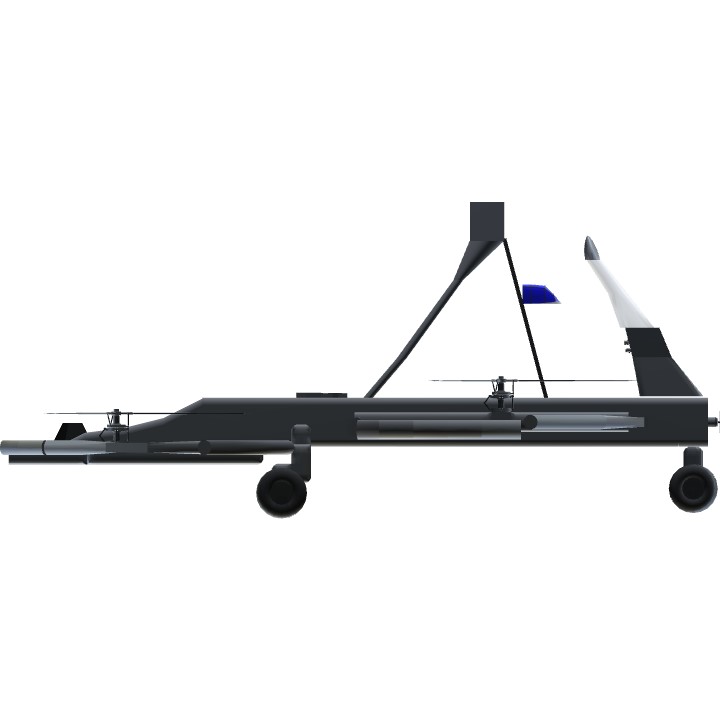
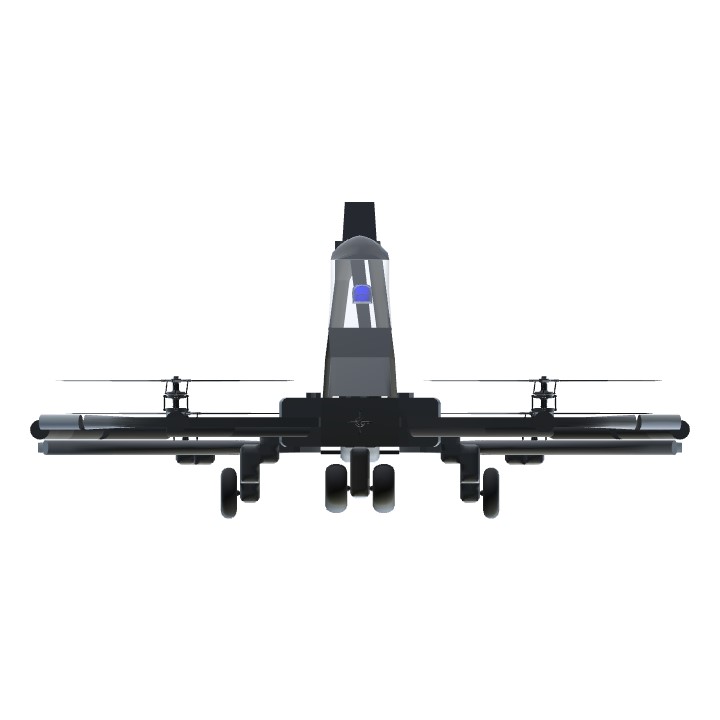
Coincidence? I think not. Because it may be easy to control in real life but instead of ways it actually kind of hard because the brain loses control easily and what’s the hardest to control is the yaw.